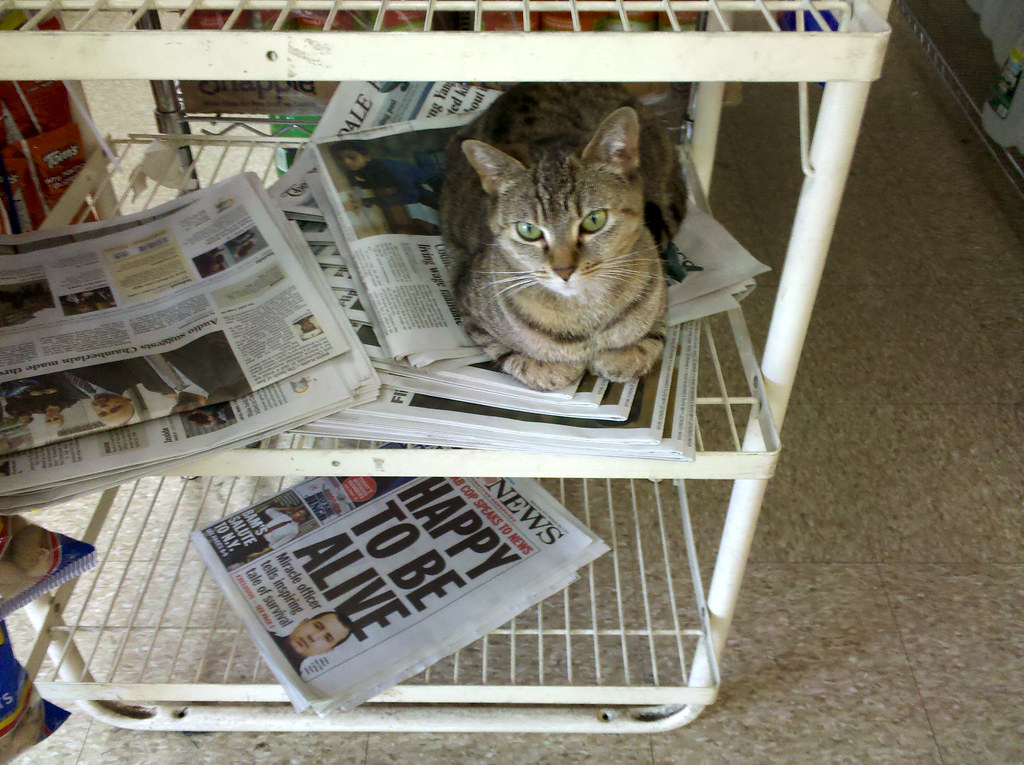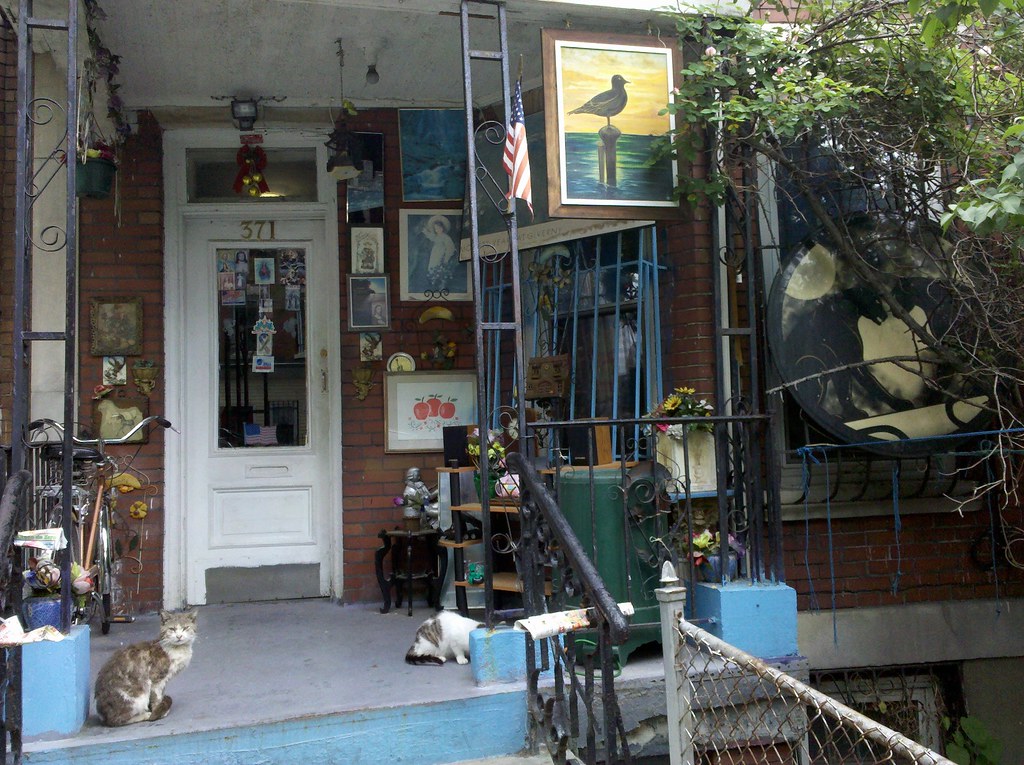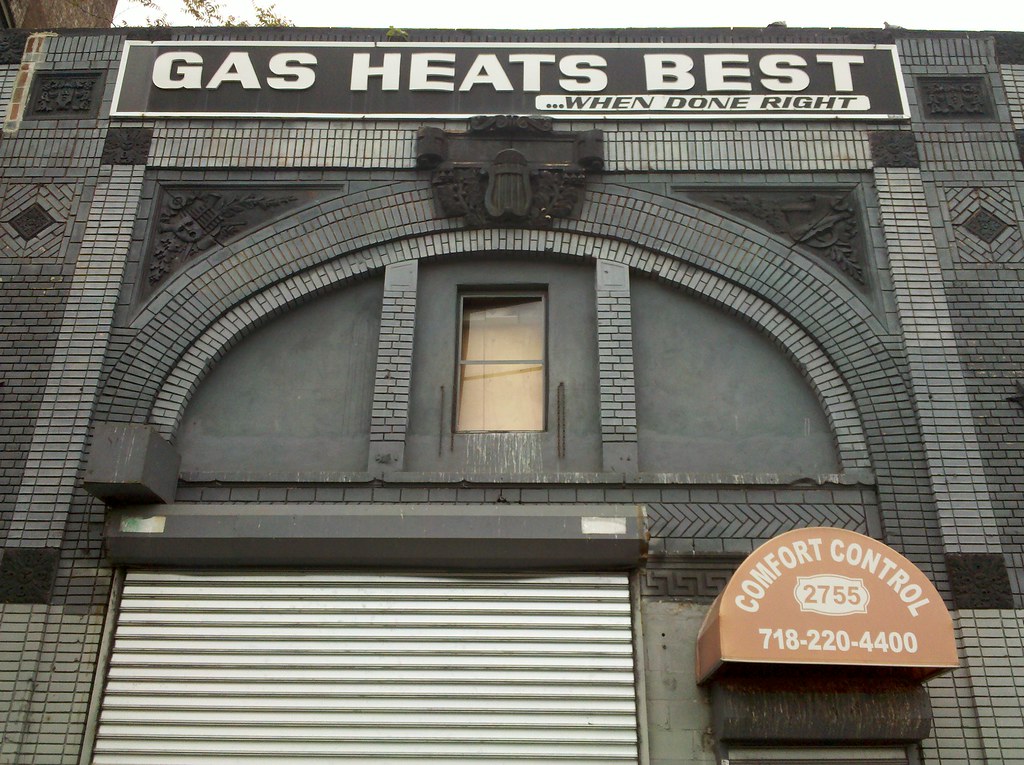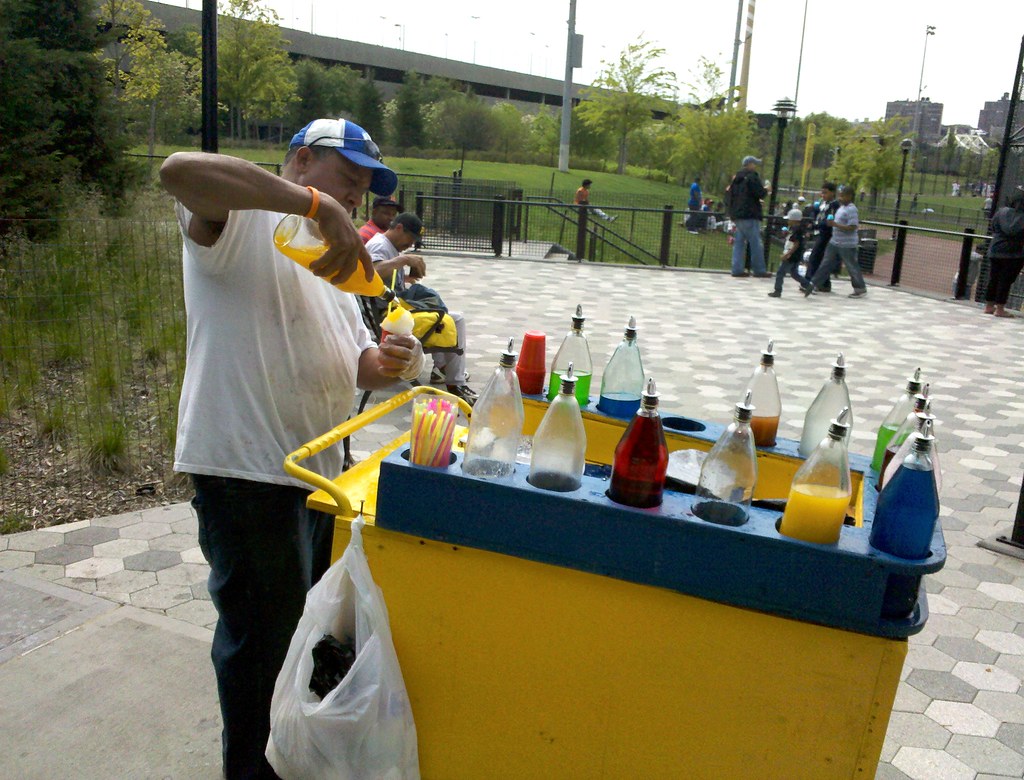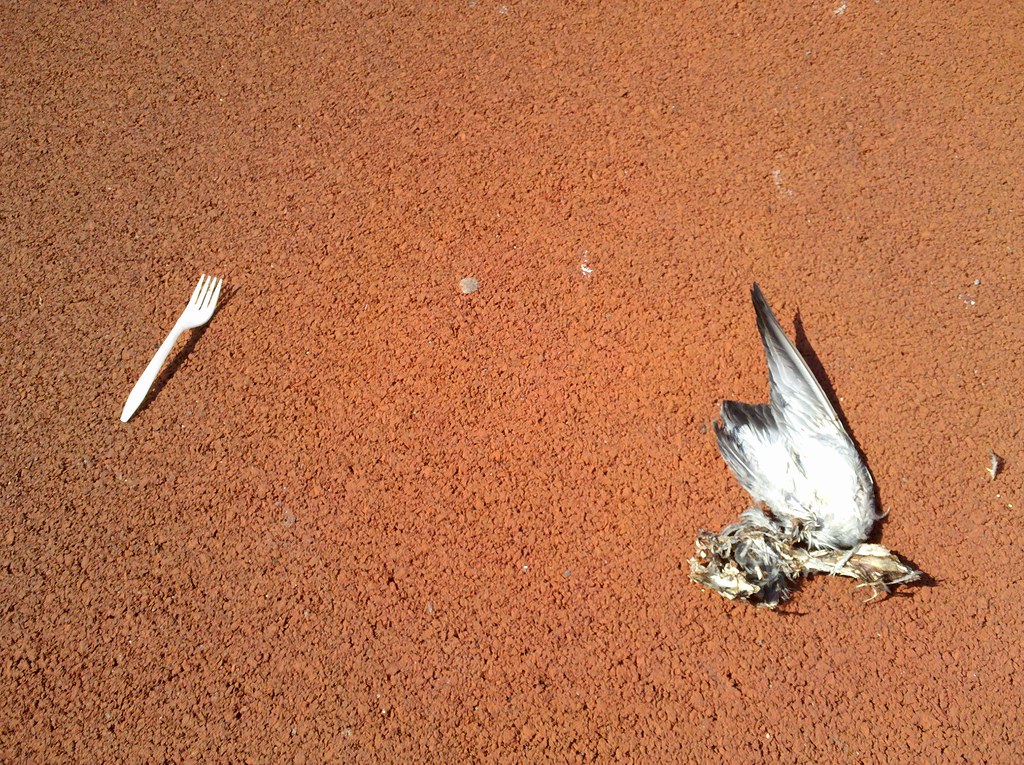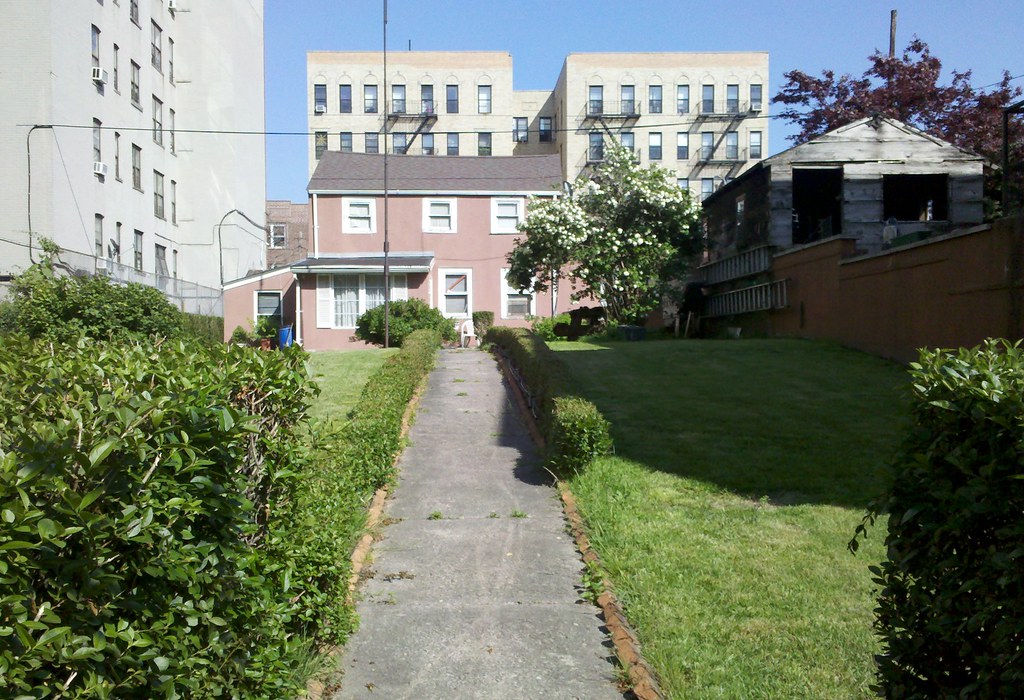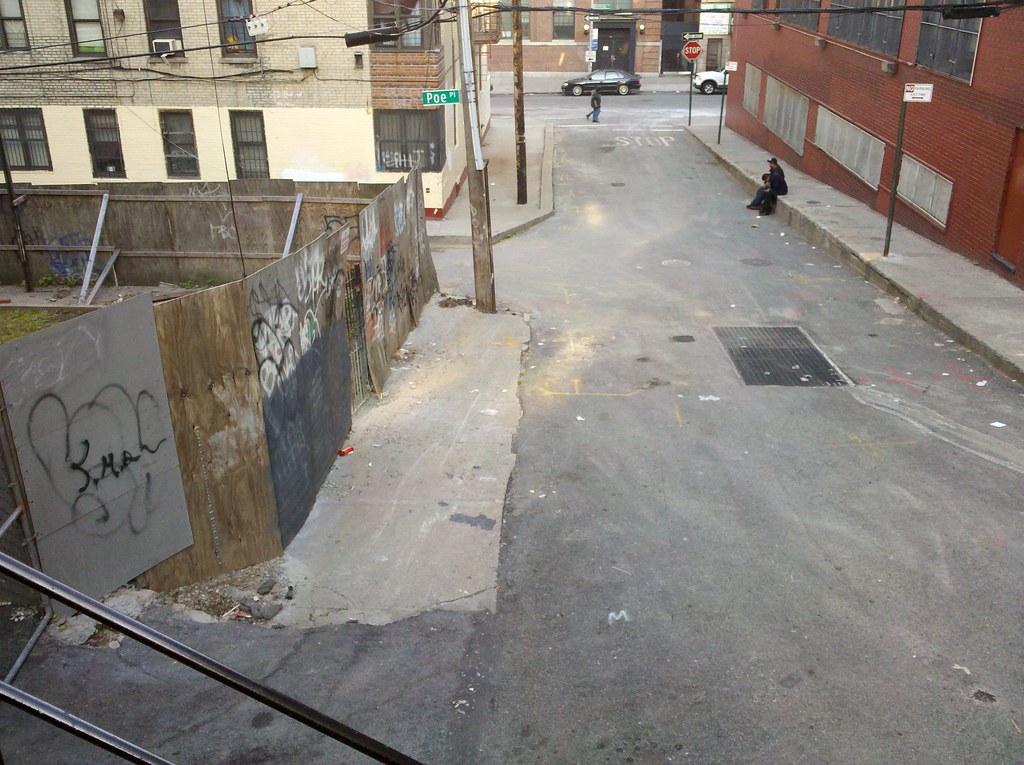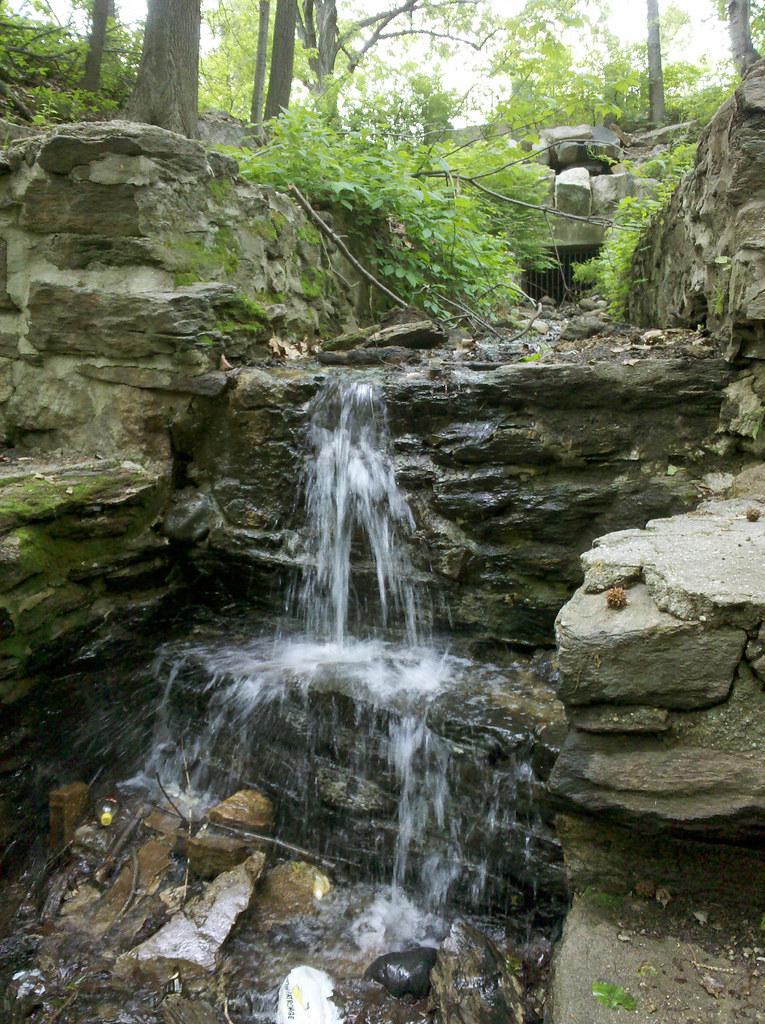
Built from the top down by the Soviets in 1974, this fortress is home to Russian UN diplomats and their families, and during the Cold War it "bristled with antennas for listening to American conversations". In 1997, the Russians drew up plans to renovate and expand the complex, but they seem to have abandoned them in the face of strident community opposition.

This is the house where the humble and beloved Lou Gehrig died in 1941 at the age of 37. The Yankees' legendary first baseman was a man of prodigious talent, one of the greatest hitters the game has ever seen. He became a regular in the Yankees' lineup in 1925, two years into his career, and never took a day off from that point forward. Playing through injury and illness, he had appeared in 2,130 consecutive games when he took his final swing, an unheard-of accomplishment that stood as a record for 56 years.
His unmatched toughness and reliability earned him the nickname "The Iron Horse", but even he was no match for the disease that now bears his name, which began ravaging his body in the prime of his life and knocked him out of baseball less than a year after he first began to notice its effects. Despite his extraordinary athletic achievements, Lou is best remembered for his moving retirement speech, telling the teary-eyed crowd packed into Yankee Stadium: "Fans, for the past two weeks you have been reading about the bad break I got. Yet today I consider myself the luckiest man on the face of the earth."
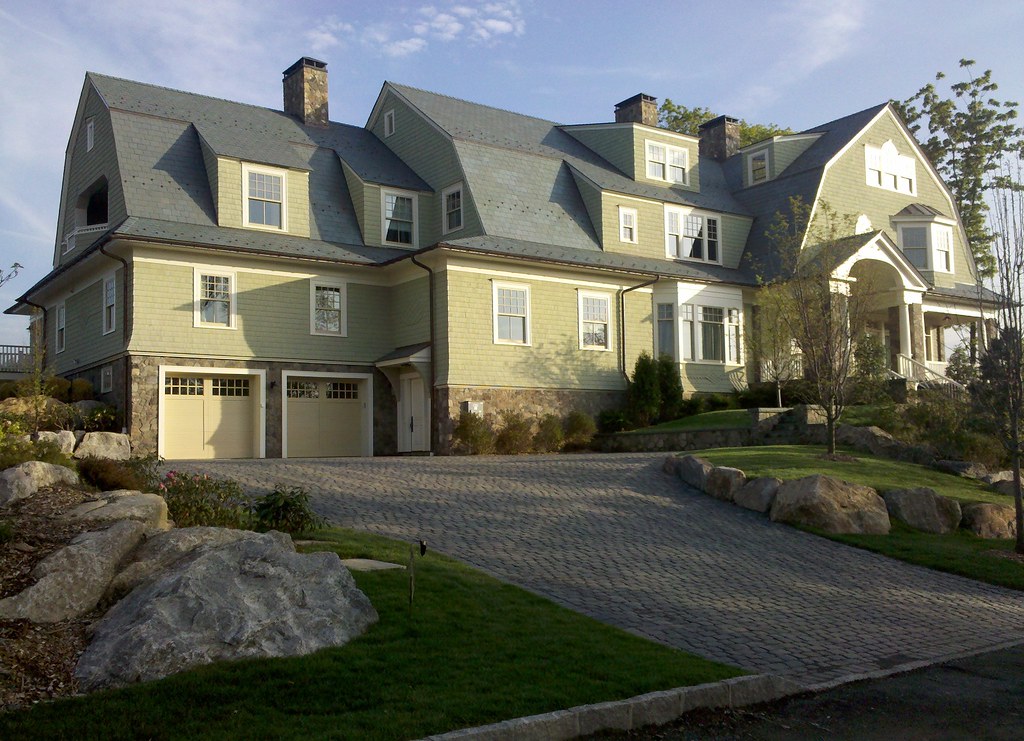
Adjacent to Fieldston in the Bronx, this new development of gargantuan houses, built on spec, has not seen a lot of interest from buyers.

Not far from this modest abode (whose length exceeds that of the photo) in Villanova Heights is the pinnacle of the highest peak in the Bronx, with an altitude exceeding 280 feet above sea level (the construction of this development looks to have altered the terrain somewhat, so the 284.5-foot elevation cited in the linked article may not be accurate anymore).

We've now entered Fieldston proper.
(If you'd like a peek inside the castle, check out this photo gallery.)

Up at the top of this uniquely paved street, on the lot currently occupied by the Edison Arms (that red and beige brick apartment building on the right) once stood Edison Studios, which produced films here in the Bronx from 1907 until the whole operation folded in 1918. Amazingly, you can watch some of the films from that era (along with, even more amazingly, many of the non-narrative "actualities" shot by Edison Studios in the years preceding its move to the Bronx, which offer an incredible view of turn-of-the-century New York, among other places), all of which are now in the public domain. Perhaps the most notable film from the Bronx days is the twelve-minute-long Frankenstein, which can be seen here. (I also found a hilariously obsequious NY Times account of Andrew Carnegie recording a film at Edison in 1914.)

The Dominican Republic's Monumento a los Héroes de la Restauración
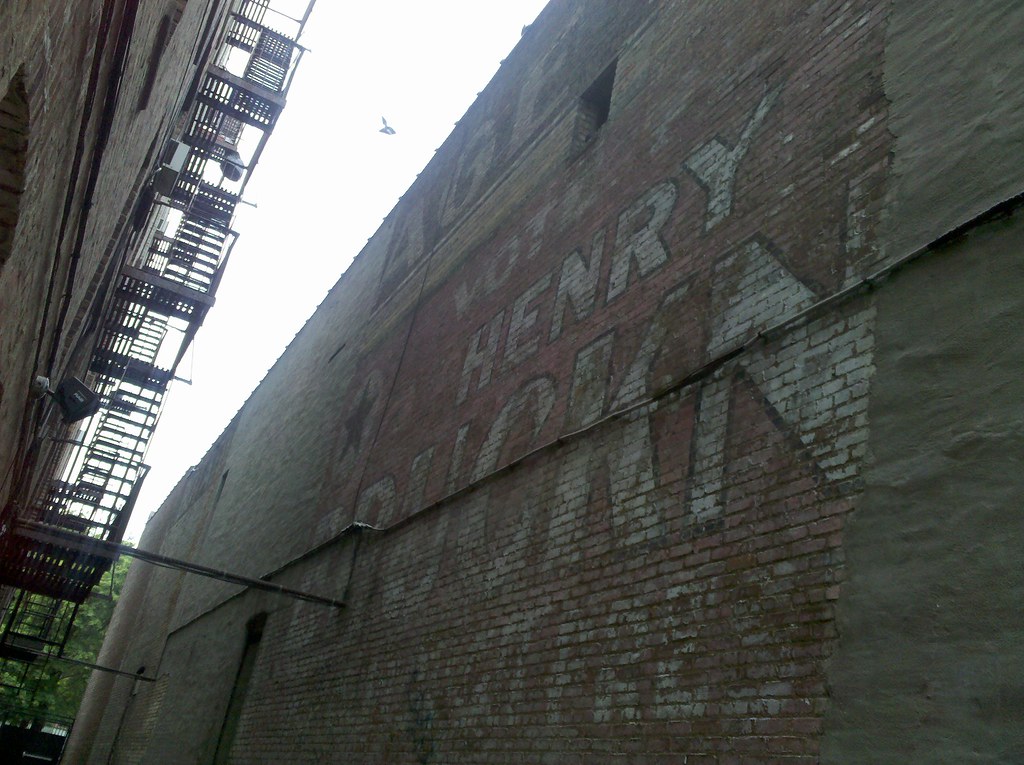
Painted more than 80 years ago, this is an ad for the former Bronx borough president, who also served as a congressman earlier in his career. In my past life as an engineer, I spent years working on a major reconstruction of a section of the Bruckner Expressway, but I never had any idea who Bruckner was. Until now!

The pre-eminent 12th-century Torah scholar seemed a bit out of place amongst the assorted pairs of shoes, hotel-grade wall art, and ancient cell phones that composed the bulk of this sidewalk sale.

If you look closely, you can see that the older sign dates back to the days when NYC had a Traffic Department. As far as I can tell, the Department of Traffic was folded into the city's Department of Transportation sometime in the late 1970s or '80s.

For decades, this brave sentry stood guard over, and literally stood in, the Bronx River. In 1970, he was reassigned here, to the grounds of the Valentine-Varian House, which was built in 1758 and is now home to the Museum of Bronx History.

On the evening of October 29, 1945, 9-year-old Joseph Vitolo saw a vision of the Virgin Mary hovering above this rocky outcropping on the Grand Concourse. She instructed him to return to this spot for 16 consecutive nights to say the rosary. He did as he was told, and, as word began to spread, bigger and bigger crowds showed up for the service each evening. On the 16th night, more than 25,000 people arrived to watch little Joseph, each perhaps hoping for a miracle in his or her own life. (Check out these incredible photos of the throngs of spectators!)
As time went on, the crowds dwindled, but Joseph continued making his nightly pilgrimage on and off for years as he searched for his life's direction. In the '60s, he married a woman he met at the shrine, and another worshiper bought the house next to the shrine and became its caretaker, sprucing things up a bit with statues, signs (one of which reads, "This place is for praying only!"), plantings, and walkways. These days, Joseph's body is failing him, and he can only make it up the stairs to the shrine every once in a while. With his wife now deceased, he has considered moving out of New York, but he just can't bring himself to leave the shrine, so integral is its presence in his life.
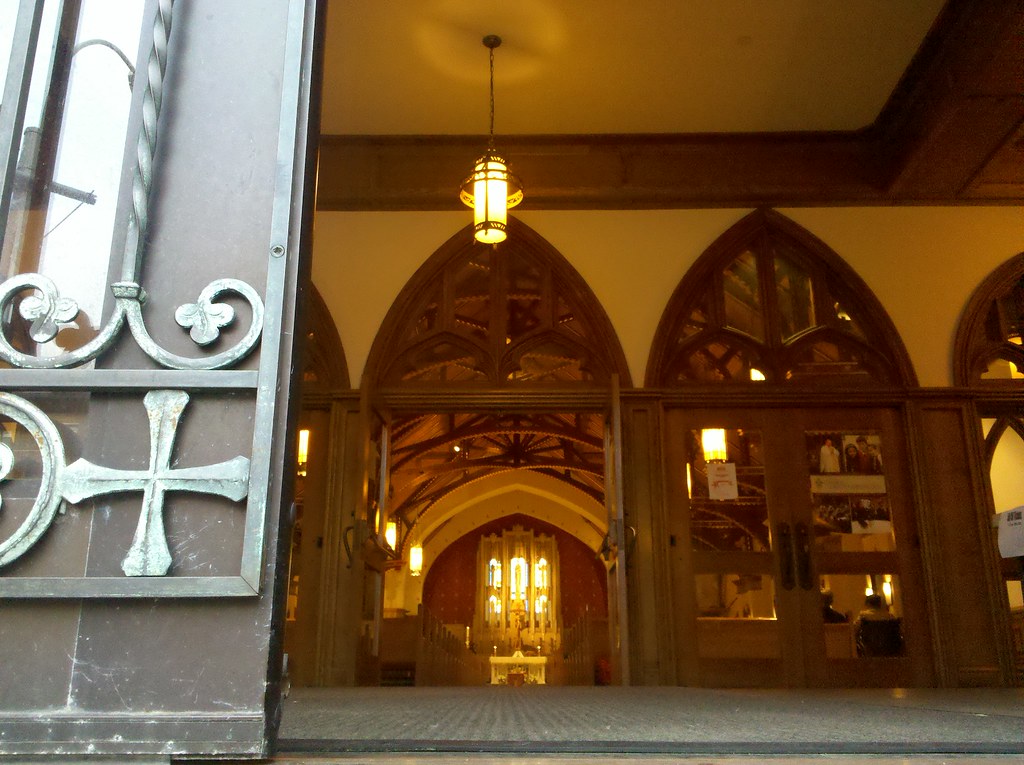
Just a few blocks from the Queen of the Universe Shrine, this church is where Joseph Vitolo's family came to worship.
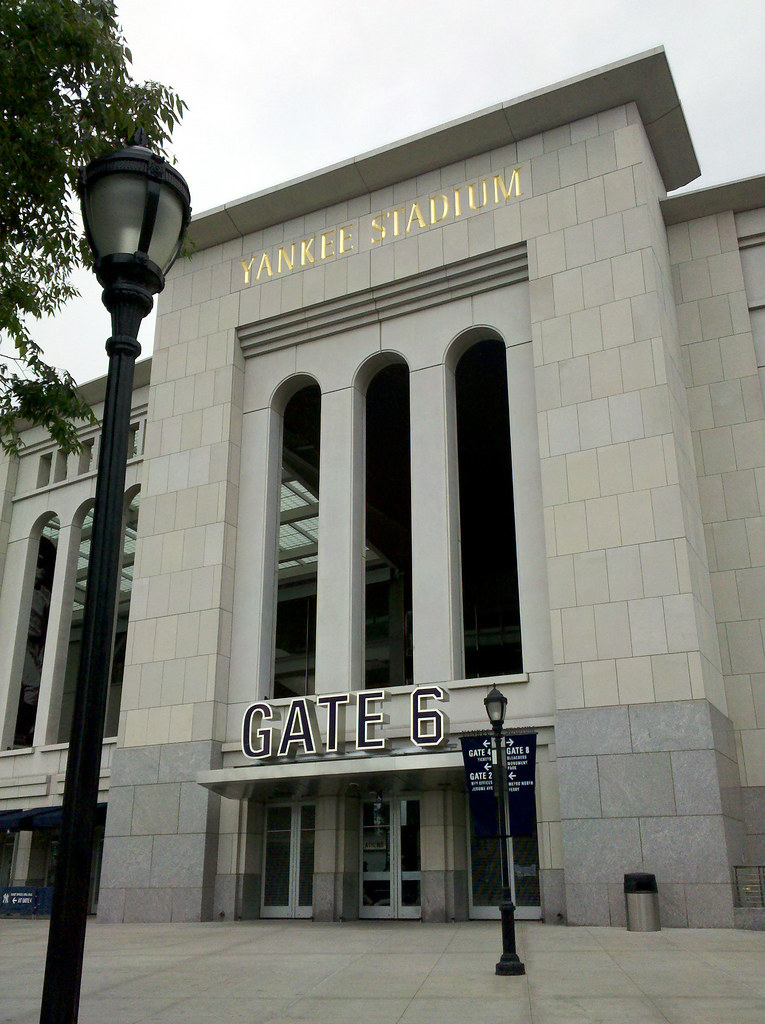
Not surprisingly, it's the most expensive ballpark ever built.
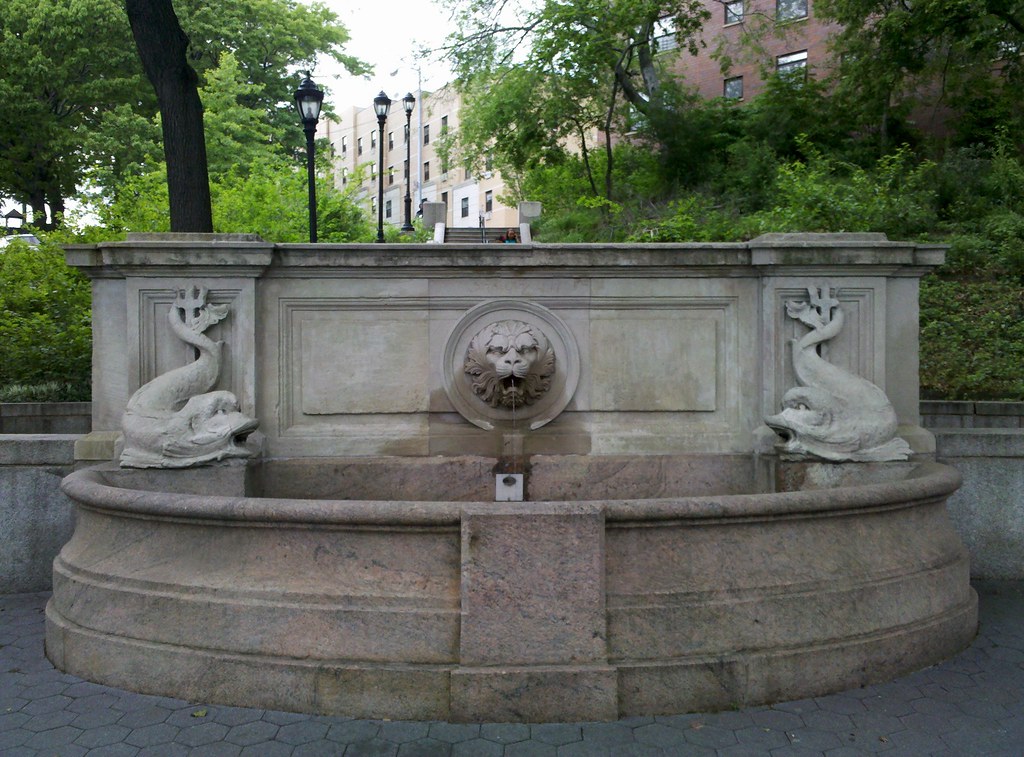
That stream of water may look awfully puny coming from the mouth of a mighty lion, but, after decades of neglect, it's a big improvement!
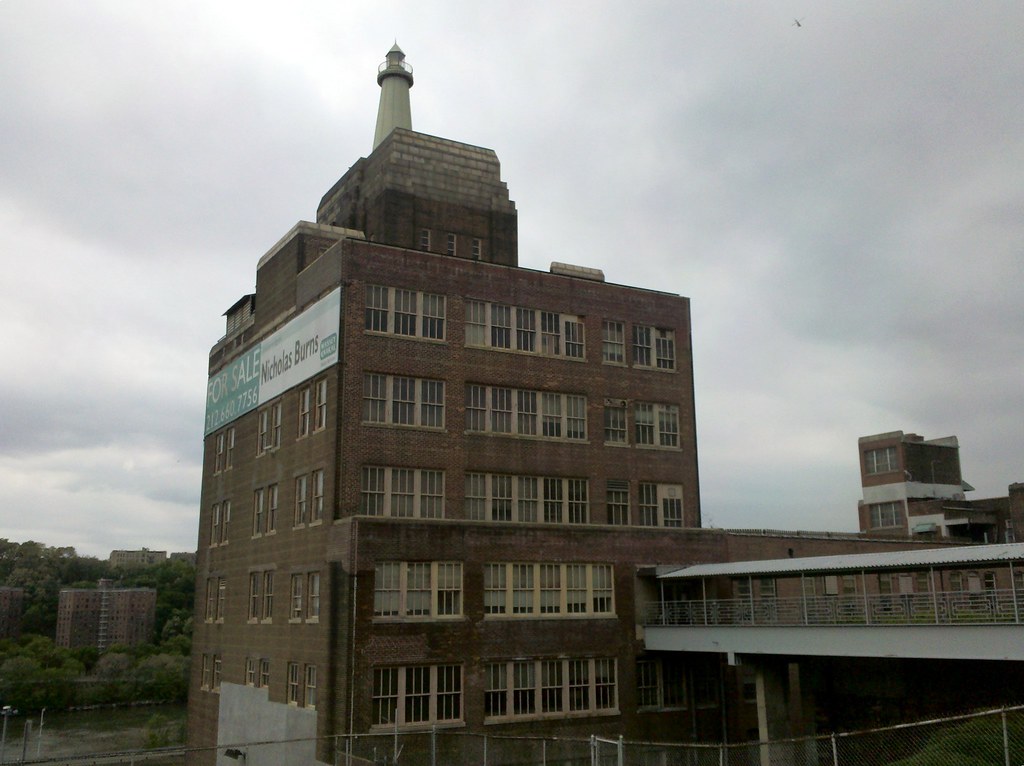
This is the three-dimensional logo of the H.W. Wilson Company, a publisher of indexes whose mission is "to give guidance to those seeking their way through the maze of books and periodicals, without which they would be lost."

Inner City Press was founded in 1987 to provide advice and assistance to those looking to move into and fix up abandoned buildings in the Bronx and Harlem, of which there were many at the time. Sadly, the annals of urban squatting are filled with tales of heartbreak (along with the occasional triumph), wherein people on the bottom rung of society work tirelessly to clean up and rehabilitate a rotting building, only to later be thrown out by the authorities.
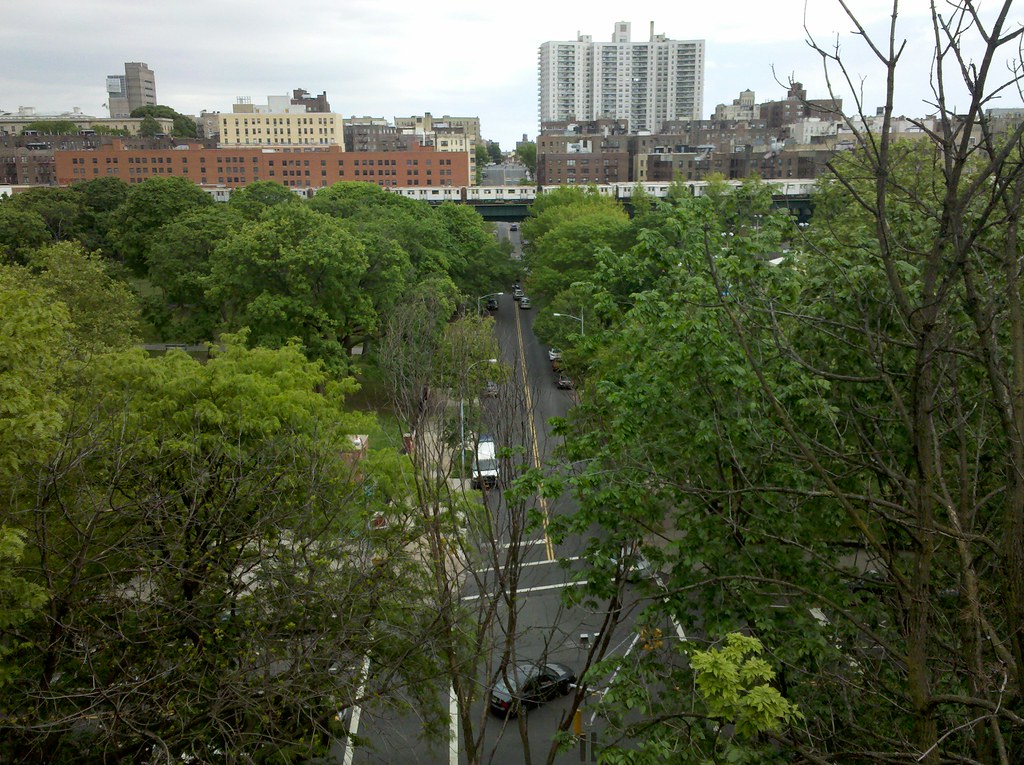
The expanse of land beneath Jerome Slope looks a bit more verdant than it did four months ago.

The proprietor of this "weird beer-and-souvenir empire" down the block from Yankee Stadium should not be confused with the Stan the Man, a St. Louis Cardinal through and through.
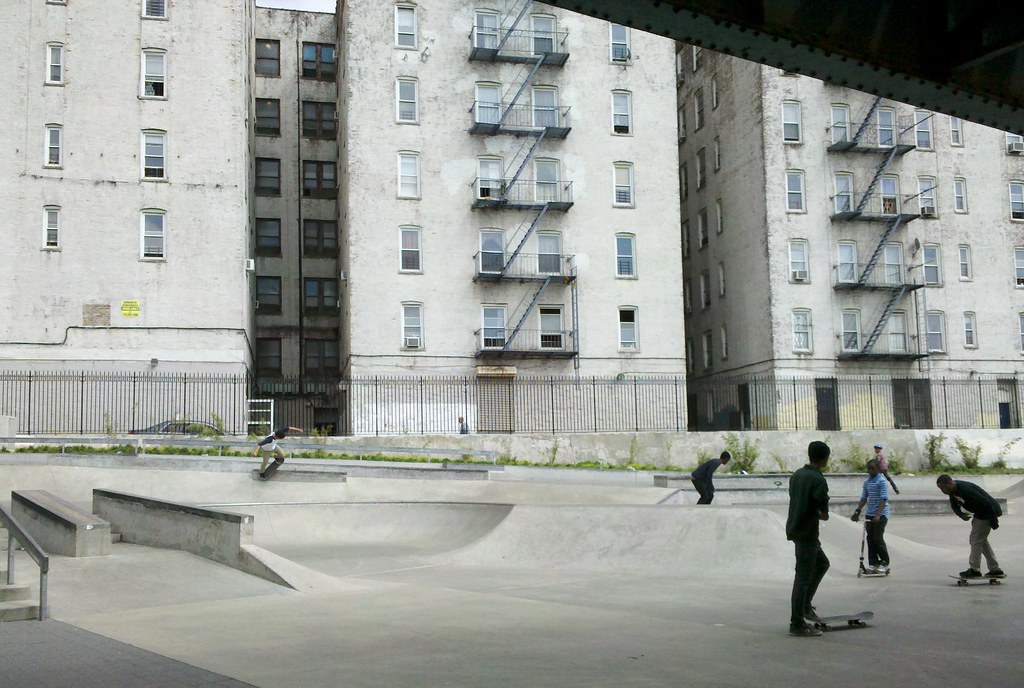
This park is one of several built to replace the green space sacrificed for the construction of the new Yankee Stadium. After years of delays in these projects, the last replacement park finally opened in early April.

This enormous shopping center (originally known as the Gateway Center), chock-full of big-box retailers, stands on the former sites of the Bronx Terminal Market (a wholesale food market where Fiorello La Guardia announced the city's ban on baby artichokes* in 1935) and the Bronx House of Detention (whose salvaged architectural ornaments, including the pictured eagle, now adorn the exterior of the shopping center).
* Check out this hilarious NY Times editorial addressing the artichoke ban's impingement on civil liberties.

This park, built as a replacement for some of the parkland lost in the construction of the new Yankee Stadium, is located just across the street from the Gateway Center, and, like Gateway, sits on land once occupied by the Bronx Terminal Market.
The name of the park refers to the mill pond that once existed on the Harlem River, created by Robert Macomb in 1814 as a reservoir for his gristmill. He built a dam across the river, topped by a toll bridge, at the location where the white truss bridge in the background (named, appropriately, the Macombs Dam Bridge) currently spans the Harlem. In authorizing the dam, the state legislature required that it be navigable by boats, and a small lock was built for this purpose. Macomb, however, made no effort to maintain the lock, and the river was soon rendered impassable. The dam changed hands a few years later, but the new owners did nothing to restore the river's navigability.
The citizens of the area were furious about the blockage of the Harlem, and in 1838, after consulting with legal experts, they devised a plan to remedy the situation. The leader of the group, Lewis G. Morris, chartered a coal ship from New Jersey to make a delivery to his property north of the dam, knowing, of course, that such a trip would be impossible. When the ship arrived at the dam, the captain requested that the draw be opened so that he could continue on his way. The bridgekeeper informed him that there was no draw to open and that the vessel would be unable to pass.
At this point, Morris, along with dozens of local men, emerged from the shadows where they had gathered and proceeded to tear a hole in the dam large enough to accommodate the ship. The owners of the dam filed a suit against Morris, but he came out victorious when the courts agreed with him that the dam constituted a "public nuisance" in its obstruction of the river. This 1900 NY Times article provides a very colorful account of the whole affair.
Off in the distance, you can see our favorite set of quadruplets. And, in case you were wondering, the structure that looks like a boardwalk running along the water is actually a single-track rail line called the Oak Point Link.
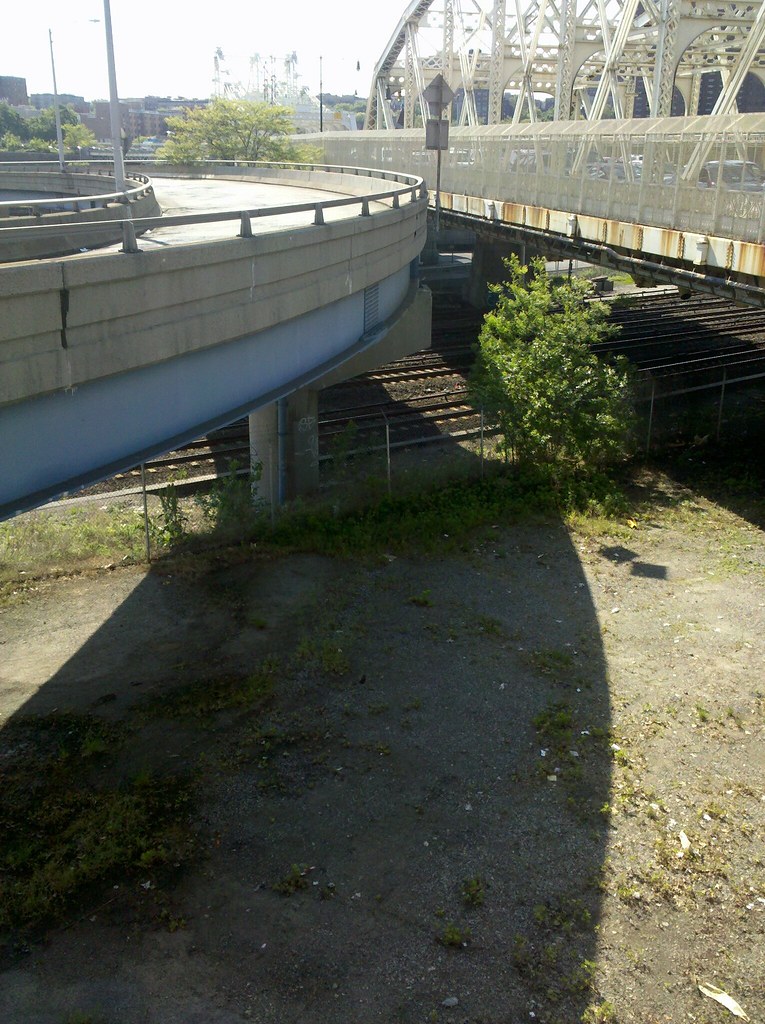
Here we have a Major Deegan on-ramp, the Macombs Dam Bridge, and the Metro-North Hudson Line.
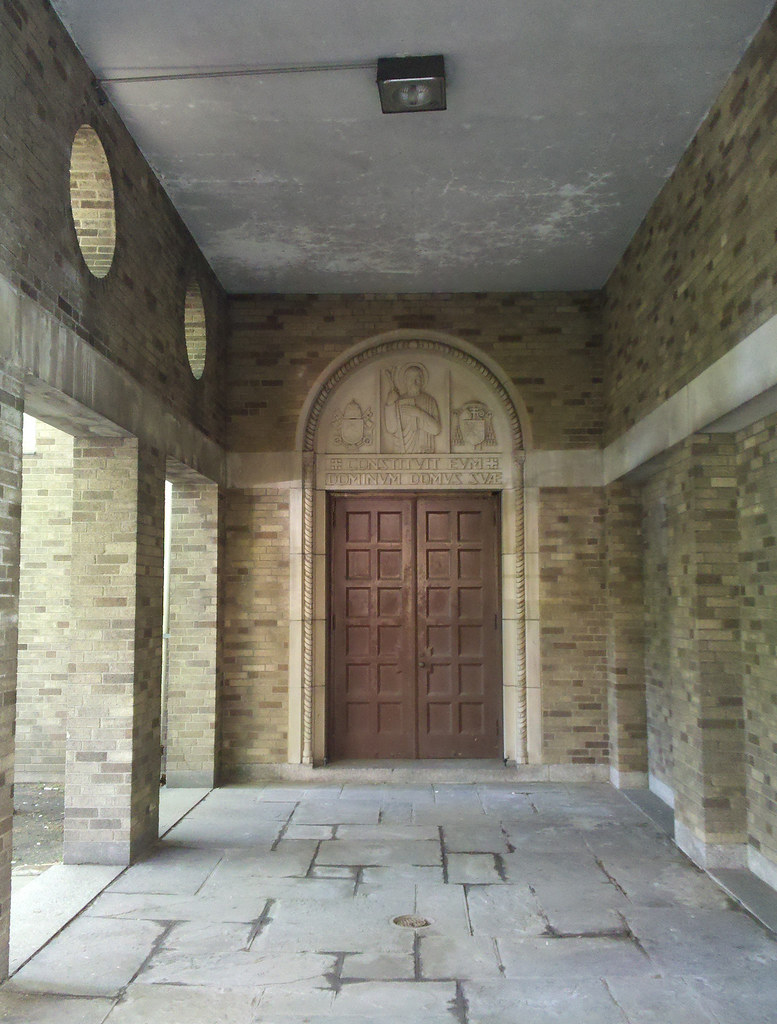
Samaritan Village drug rehab center, formerly a Carmelite convent
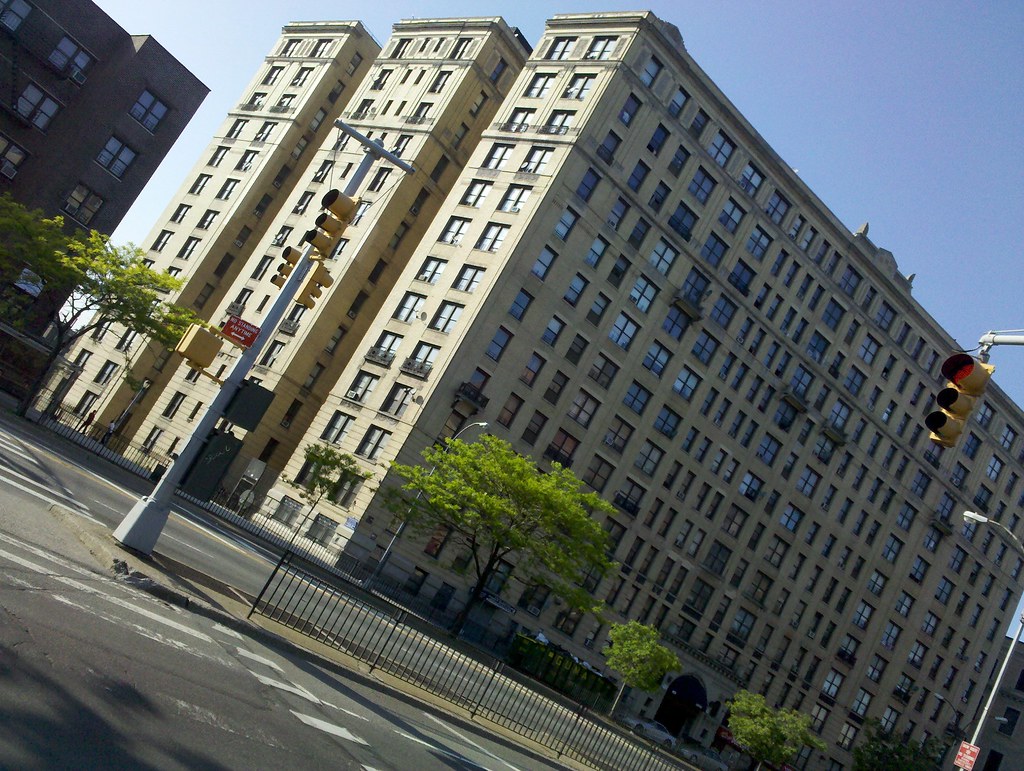
Named for a Bronx-born signer of the Declaration of Independence, this was, in its heyday, perhaps the grandest apartment building on the Grand Concourse.
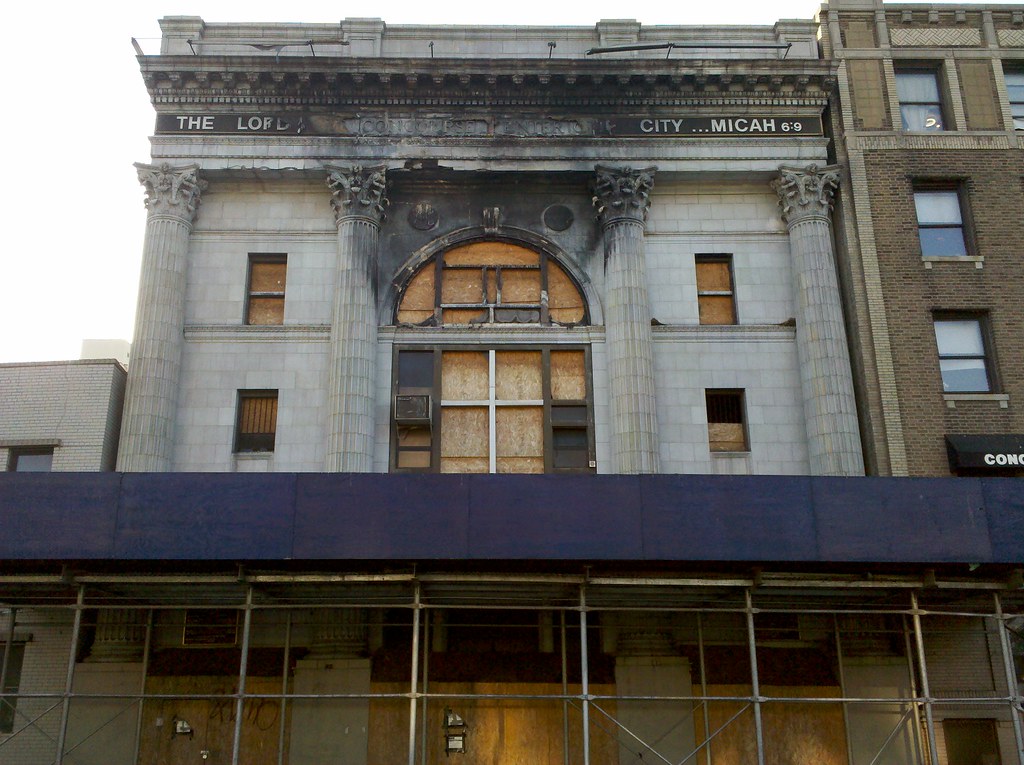
This church, whose community outreach programs included a soup kitchen that fed up to 10,000 people per month, was gutted by a fire in 2010. The flames incinerated part of the verse from Micah (which read "The Lord's voice crieth unto the city") that covered the frieze, revealing the words "Concourse Center". Like many churches in the Bronx, this one was once a synagogue: the Concourse Center of Israel.
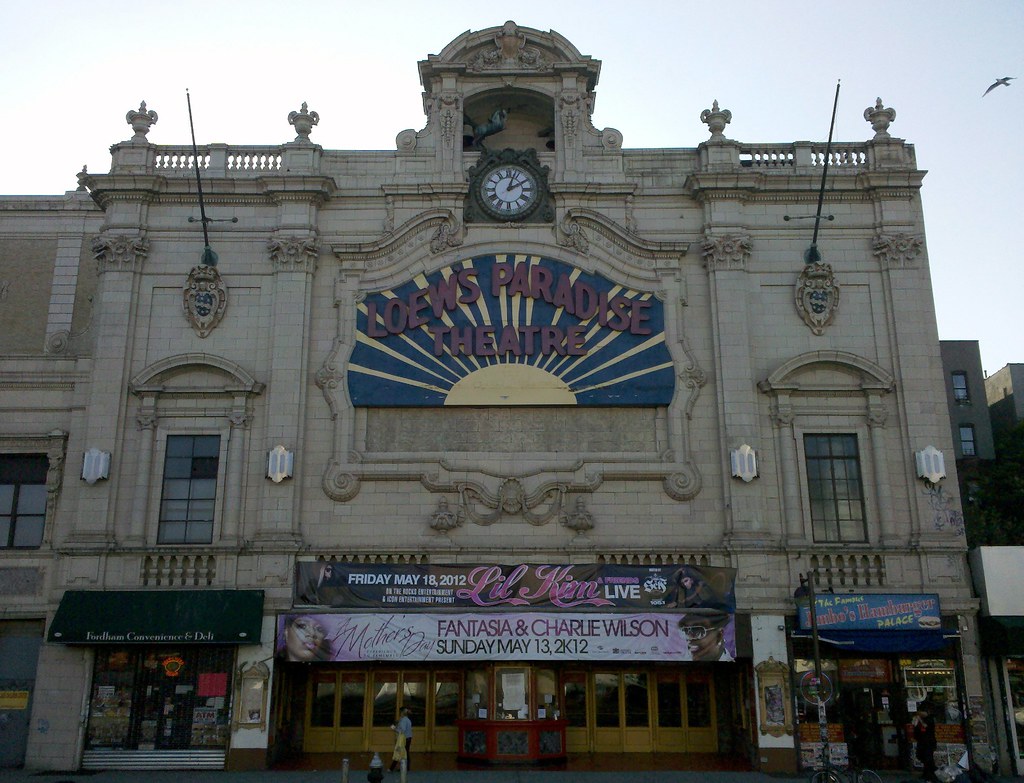
Opened on the Grand Concourse in 1929 as one of five preposterously spectacular Wonder Theatres (whose ranks also include the 175th Street Theatre, a.k.a. Reverend Ike's Palace Cathedral) built by Loew's to "take people out of their humdrum existence and bring them into a world of unimagined wealth and luxury", the Paradise was resurrected in (almost) all its former glory as a live entertainment venue back in 2005. It's generally closed to the public unless there's a show going on and you've bought a ticket, but I did get lucky one day when I passed by. They were doing some work inside and left the front door open, so I was able to go wander around the interior, which was an otherworldly experience (scroll down for pictures).
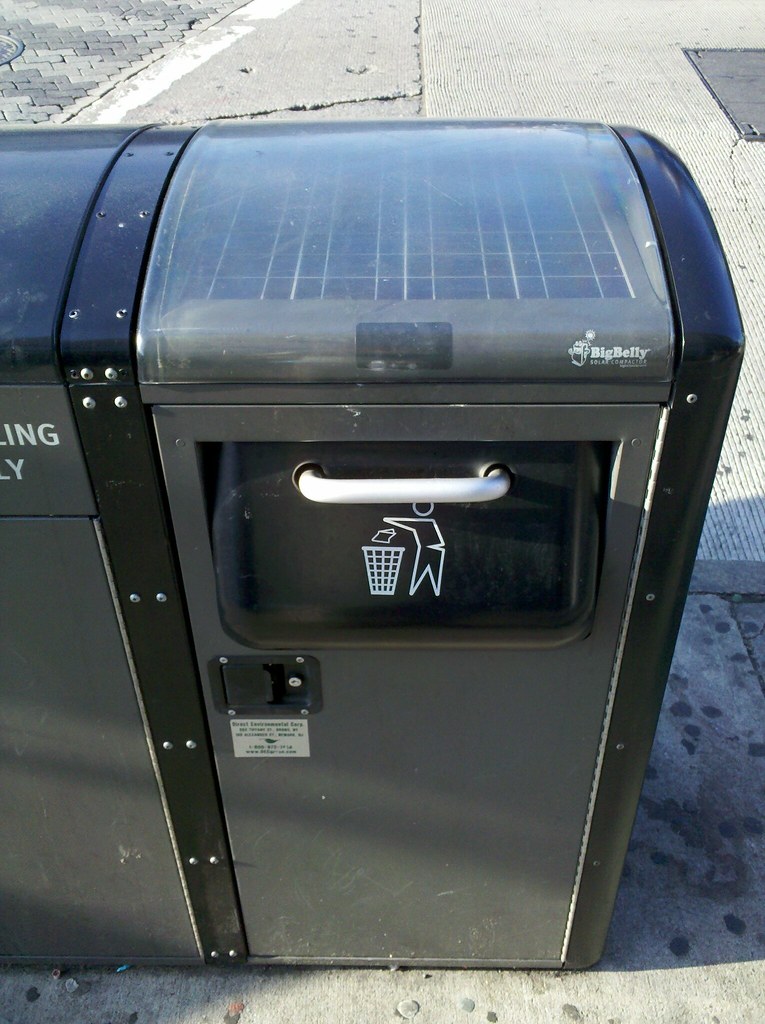
This solar-powered trash compactor can hold about five times more garbage than a standard waste bin, reducing the number of times a garbage truck has come collect its contents. Since it's fully enclosed, it prevents trash from toppling or blowing out, and keeps rats and pigeons from getting inside. (Although, on the other hand, I imagine there are some people too lazy to bother pulling open the door who will just throw their garbage on the street instead.) Some of these devices can wirelessly transmit information about their status to the waste collection agency or company that services them, but I have not heard of this feature being used in NYC.

This mighty forest, one of the city's 51 Forever Wild Nature Preserves, seems to be enjoying the advance of spring. Through the trees, over to the right, you might just be able to make out the wetlands of Rattlesnake Creek.

